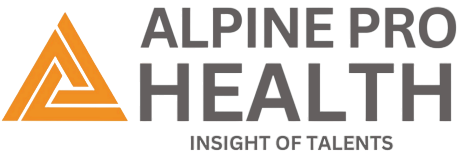In the complex landscape of U.S. healthcare, Medical Coding Compliance plays a crucial role in ensuring accurate billing, proper reimbursement, and adherence to legal and ethical standards. However, like any critical area in healthcare administration, coding compliance has its positives and pitfalls. In this article, we explore the good, the bad, and the ugly sides of medical coding compliance, offering insights that providers, coders, and healthcare administrators should understand.
The Good: Accuracy, Revenue Protection, and Patient Trust
A well-structured medical coding compliance program offers numerous benefits:
1. Ensuring Accurate Billing
Proper coding compliance ensures that healthcare providers bill for services correctly, reducing the risk of undercoding or overcoding. Accurate coding leads to fair Reimbursement and prevents revenue loss.
2. Protecting Revenue Streams
Compliance programs help organizations capture all billable services, ensuring that no revenue is left unclaimed. Regular audits identify coding errors, allowing providers to correct discrepancies before they become costly.
3. Enhancing Patient Trust
Patients rely on Healthcare providers to maintain ethical billing practices. Transparent coding compliance fosters trust, ensuring that patients are billed fairly and that their insurance claims are processed correctly.
4. Reducing Audit Risks
Proactive compliance measures minimize the likelihood of audits by Medicare, Medicaid, and private insurers. Organizations that follow coding guidelines are less likely to face recoupments or penalties.
The Bad: Compliance Challenges and Financial Risks
Despite its advantages, medical coding compliance comes with challenges that can impact healthcare organizations.
1. Complex Regulatory Requirements
Medical coding regulations are constantly evolving. Keeping up with ICD-10, CPT, and HCPCS updates requires ongoing education and training for coders.
2. Increased Administrative Burden
Compliance demands extensive documentation, audits, and reporting, adding to the workload of healthcare providers and coding professionals.
3. Financial Risks from Errors
Even minor coding mistakes can lead to Denied Claims, revenue loss, and potential fines. Organizations must invest in compliance programs to mitigate these risks.
4. Struggles with Coding Accuracy
Coders often face challenges in interpreting physician documentation, leading to errors in code selection. Misinterpretation can result in billing discrepancies and compliance violations.
The Ugly: Legal Consequences and Fraud Risks
Failure to comply with medical coding regulations can have severe repercussions.
1. Regulatory Scrutiny and Legal Penalties
Government agencies like the Office of Inspector General (OIG) and Medicaid Fraud Control Units (MFCUs) actively investigate coding violations. Non-compliance can lead to fines, legal action, and reputational damage.
2. Whistleblower Risks
The Corporate Whistleblower Awards Pilot Program (CWAPP) incentivizes employees to report fraud. Organizations must foster a culture of transparency to prevent internal whistleblowing incidents.
3. Increased Fraud Investigations
Healthcare fraud cases are on the rise, with authorities cracking down on upcoding, unbundling, and false claims. Organizations must implement strict compliance protocols to avoid legal trouble.
4. Loss of Provider Credentials
Severe compliance violations can result in license revocation, exclusion from federal programs, and loss of payer contracts. Healthcare providers must prioritize compliance to safeguard their practice.
Building a Strong Medical Coding Compliance Program
Avoiding the pitfalls and reaping the benefits of compliance requires a proactive, structured, and strategic approach.
1. Invest in Education and Training
Ongoing training is essential for medical coders and clinical staff. Regular updates on code revisions, payer-specific rules, and documentation best practices help reduce compliance risks.
2. Implement Internal Audits
Routine coding audits identify gaps and areas for improvement before external agencies step in. Internal audits should be scheduled quarterly or semi-annually, depending on claim volume and complexity.
3. Use Technology
Modern Computer-Assisted Coding (CAC) tools, Clinical Documentation Improvement (CDI) software, and AI-powered audit tools can help detect inconsistencies and automate compliance checks. These tools enhance coder productivity and accuracy.
4. Engage a Compliance Officer
Hiring or assigning a compliance officer ensures that someone is directly responsible for overseeing coding accuracy, regulatory updates, audit response, and staff compliance education.
5. Establish a Clear Policy Framework
Developing written policies and procedures around documentation, coding, auditing, and error correction is essential. Everyone involved from physicians to billing staff should understand their role in compliance.
Future of Medical Coding Compliance
With the rise of value-based care, telehealth, and AI-driven coding, compliance standards are becoming more nuanced. Healthcare providers must focus not only on billing accuracy but also on aligning coding practices with clinical quality metrics, Risk Adjustment models, and population health data.
Emerging trends like ICD-11 implementation, interoperability regulations, and healthcare transparency laws will require even more precise coding and documentation practices. As technology evolves, so too must compliance strategies.
Final Thoughts
Medical coding compliance is not just a billing requirement, it’s a cornerstone of operational integrity, clinical accuracy, and patient trust. The “good” showcases its undeniable value, the “bad” exposes its challenges, and the “ugly” serves as a cautionary tale.
Healthcare providers must treat compliance not as an afterthought, but as a central pillar of success. With the right people, policies, and technologies in place, it’s possible to create a culture of compliance that not only avoids risks but also unlocks better outcomes across the board.


